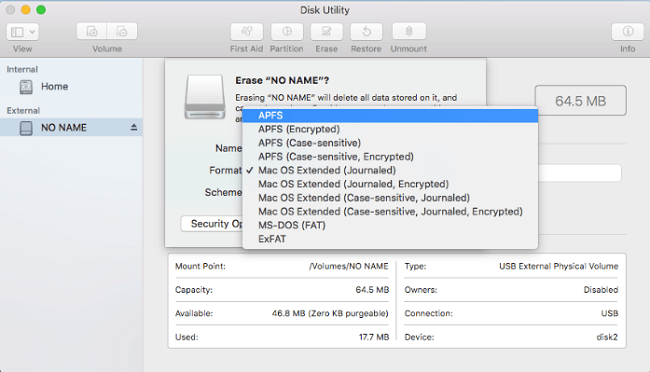

- #CONVERT EXTERNAL HARD DRIVE WINDOWS NT FILESYSTEM FOR MAC HIGH SIERRA INSTALL#
- #CONVERT EXTERNAL HARD DRIVE WINDOWS NT FILESYSTEM FOR MAC HIGH SIERRA PASSWORD#
#CONVERT EXTERNAL HARD DRIVE WINDOWS NT FILESYSTEM FOR MAC HIGH SIERRA INSTALL#
(The Terminal command used here assumes the drive is named Untitled.) Also, make sure the Yosemite installer, called Install OS X Yosemite.app, is in its default location in your main Applications folder (/Applications). Connect to your Mac a properly formatted 8GB (or larger) drive, and rename the drive Untitled.Using the createinstallmedia command in Terminal Here are the required steps:

(Note that the createinstallmedia tool doesn’t work under OS X 10.6 Snow Leopard-it requires OS X 10.7 Lion or later.) The createinstallmedia method is the easiest if you’re at all comfortable using Terminal, it’s the approach that I recommend you try first. I’ve come up with three ways you can create a bootable OS X install drive for the Yosemite: using the installer’s built-in createinstallmedia tool using Disk Utility or performing the Disk Utility procedure using Terminal. Create the Yosemite install drive: The options If you don’t, you’ll have to redownload the installer from the Mac App Store before you can create a bootable installer drive. If you plan to use that installer on other Macs, or-in this case-to create a bootable drive, be sure to copy the installer to another drive, or at least move it out of the Applications folder, before you install. As with the Mavericks installer, if you leave the Yosemite beta installer in its default location (in the main Applications folder) when you install OS X 10.10, the installer will delete itself after the installation finishes.

Like all recent versions of OS X, Yosemite is distributed through the Mac App Store.


 0 kommentar(er)
0 kommentar(er)
